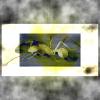I'm quite new to the world of ant keeping. I've been reading through lots of info on this forum and on other sites and I've got a couple of questions which I'm hoping you guys/gals can help me with. I'm sorry if they seem really basic, but as a scientist by trade I tend to research things very thoroughly, and make sure I know exactly what's going on before I actually do it myself! I figure when something as fascinating as ants are involved it's only fair to be fully prepared
So, from what I can tell it looks like a test tube setup seems to be the way to go for a new colony. In all likelihood I will be going for Lasius Niger - they seem to be a common beginner species and being in the UK they seem to be readily available. I'd probably look at getting a queen with a couple of workers for my first colony. Does that sound reasonable?
Most guides recommend having an outworld - this is something I'd love to do. I'm a bit confused though: from what I can tell, with the test tube you have part of it filled with water, then a cotton wadding, then the queen (and workers?), then the end is blocked off again, right? How does this work with the workers going out for food, though? If the end is blocked off they surely can't get out. I don't see any mention of ever removing the cottonwool at the entrance but to my mind that must surely be the only way you can let them get out to forage. Maybe someone can clarify?
Also, I've noticed a lot of people make their nests from ytong or similar substances (when it's time - once a decent number of workers are out and about). I wondered to what extent it is possible to have a nest made of more natural substances. Whilst I love the idea of being able to see the colony in its nest I think I prefer the idea of them digging their own tunnels and caves. Is this possible (esp for Lasius Niger)? If so, how does one go about that, Vs just providing a tube/entrance to a "preshaped" ytong nest?
I had a few other questions but they seem to have vanished from my mind. I'll be sure to pop back if they resurface.
Thanks in advance!




















